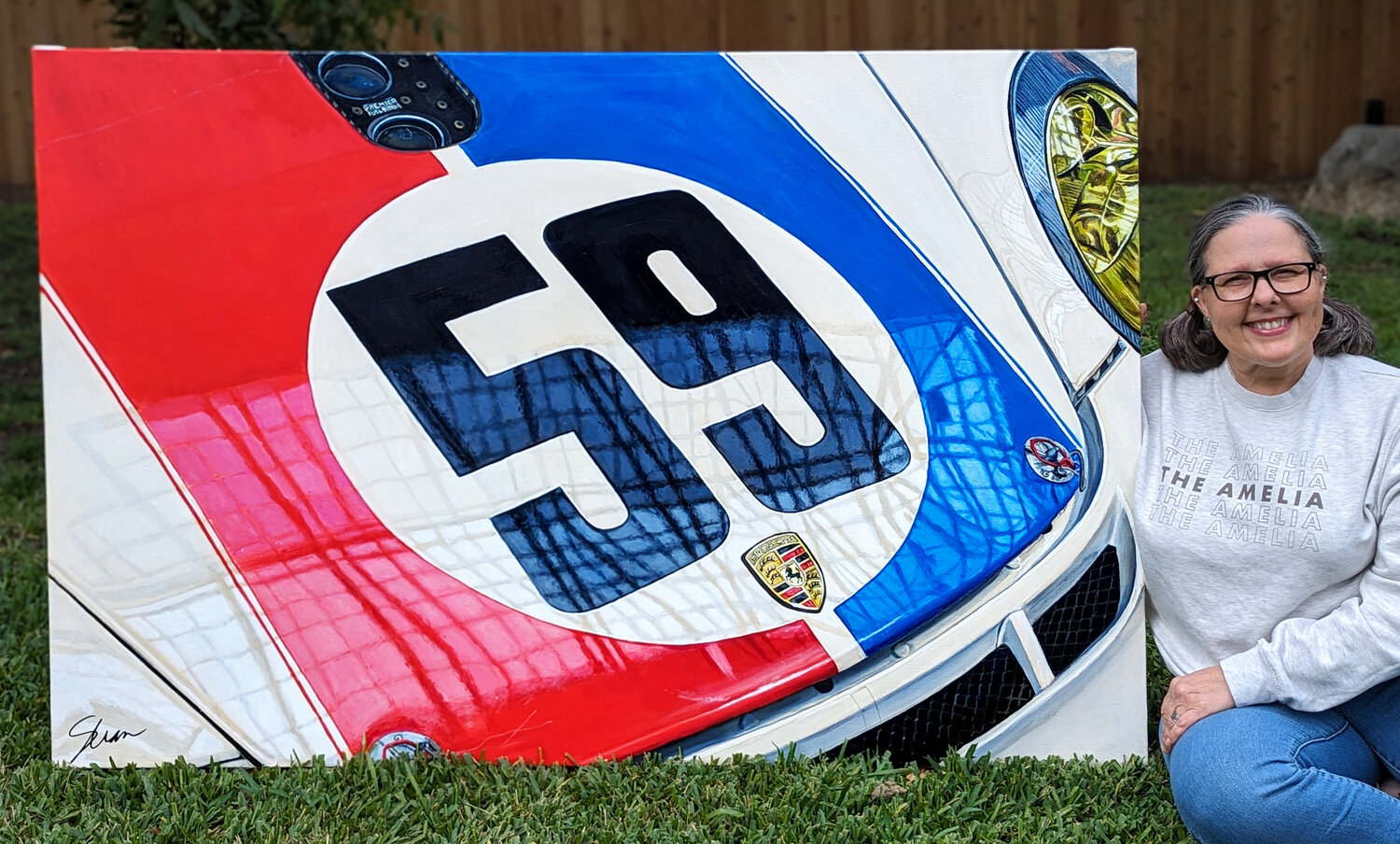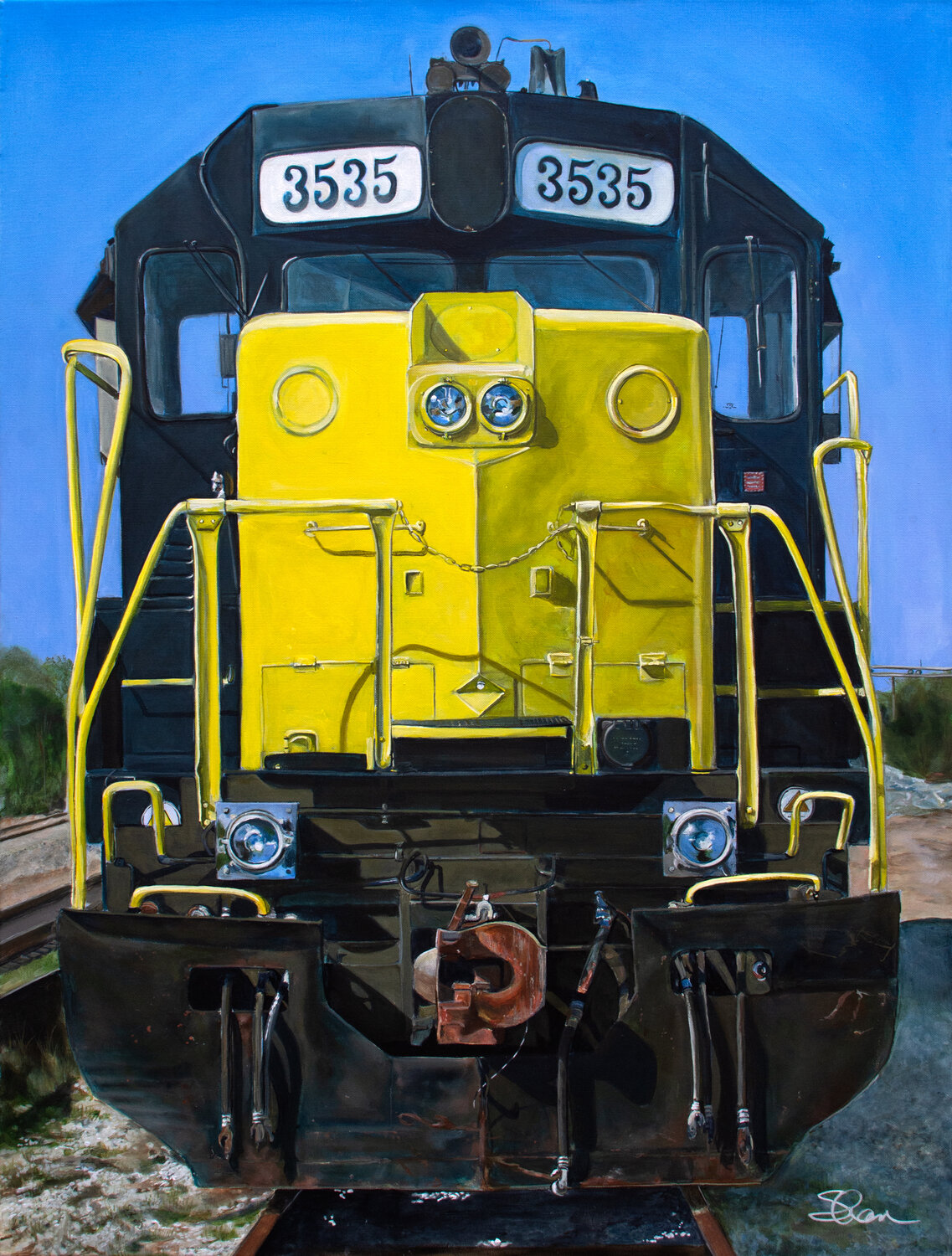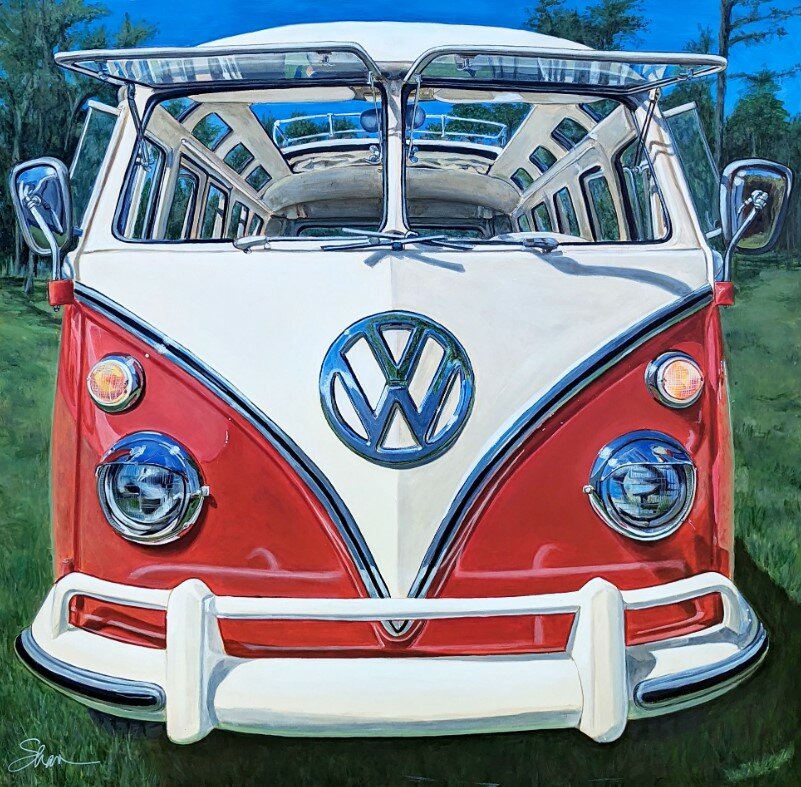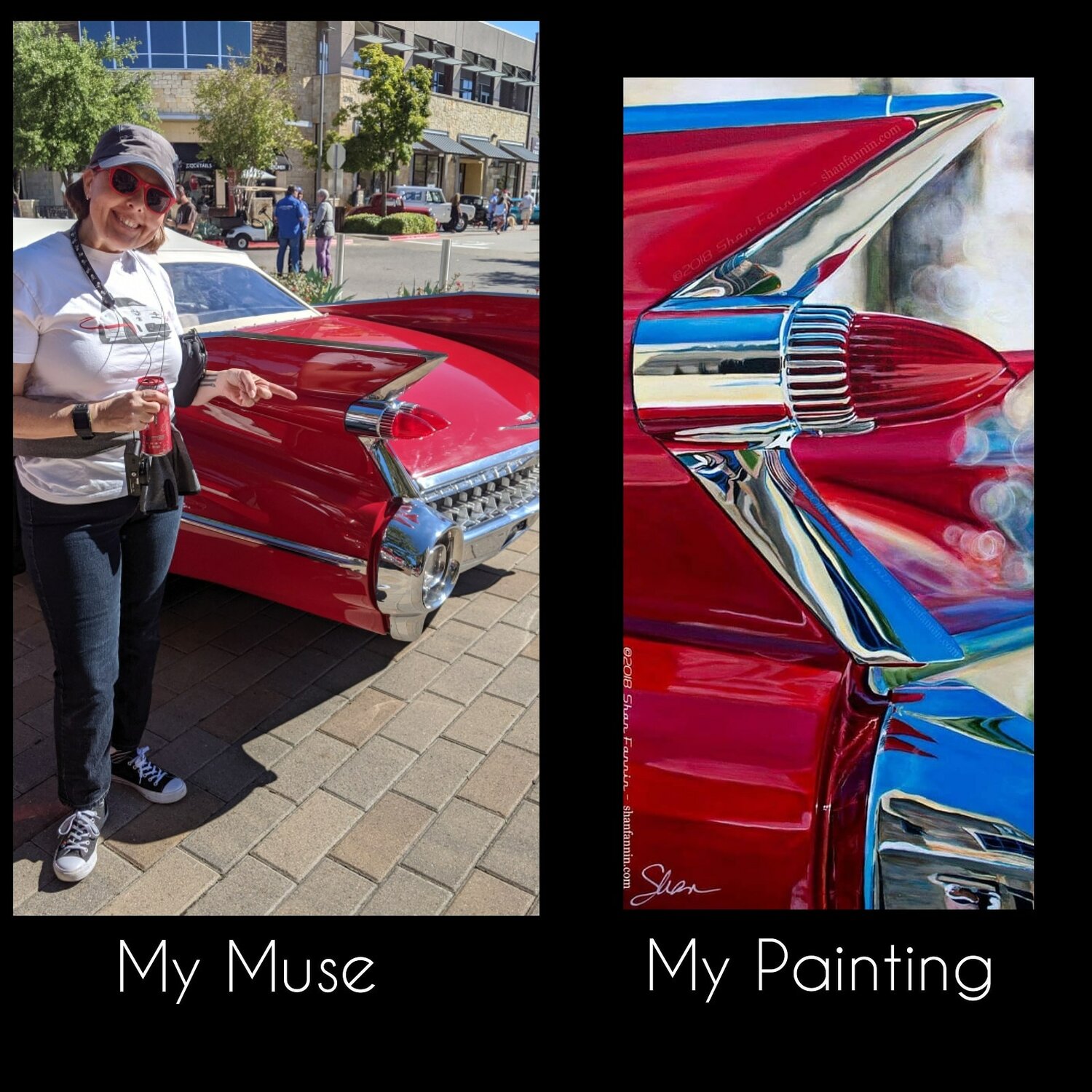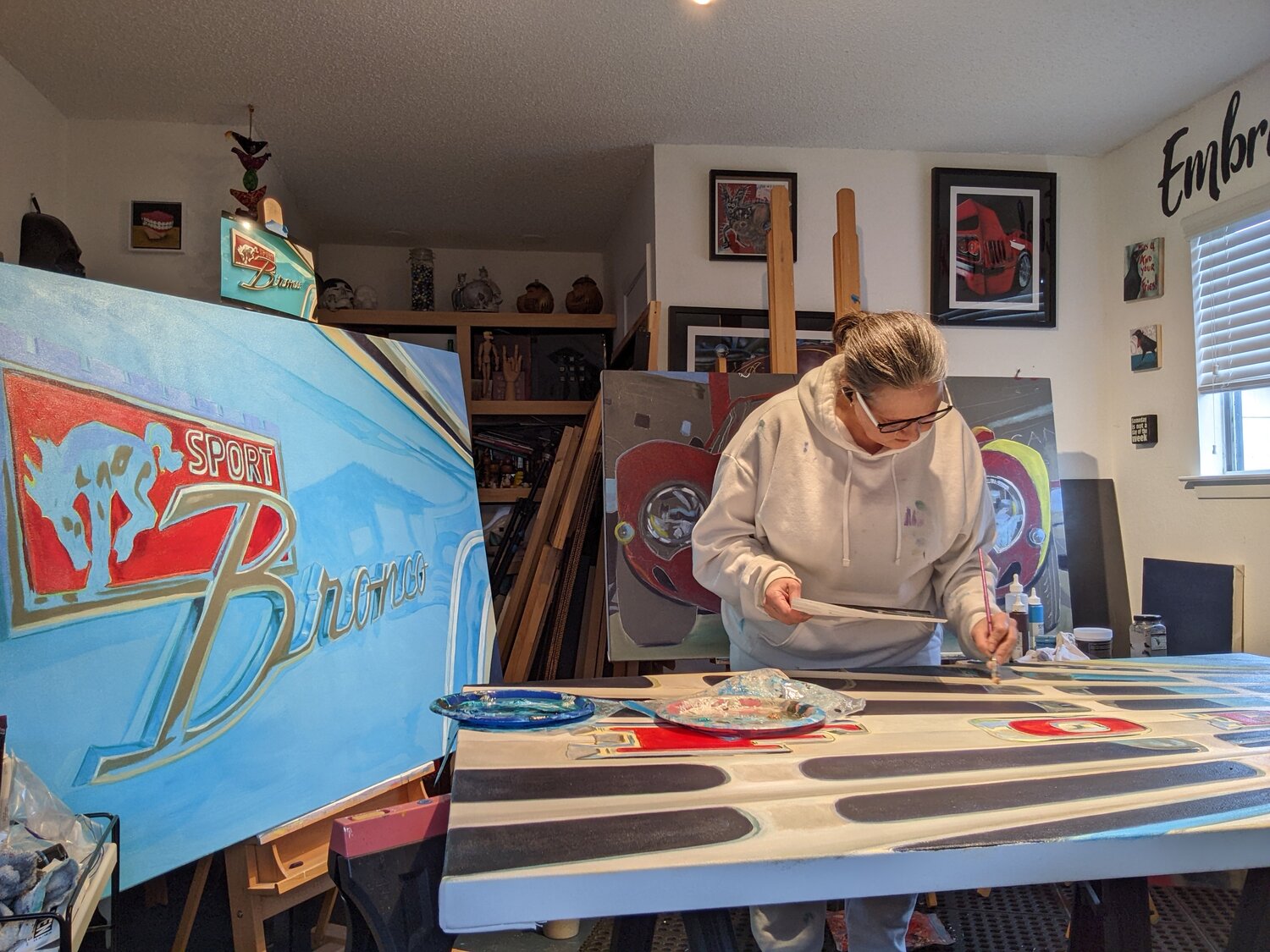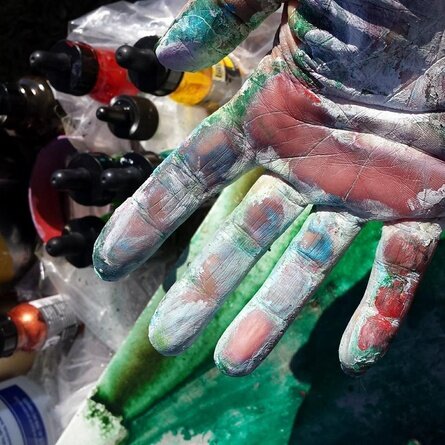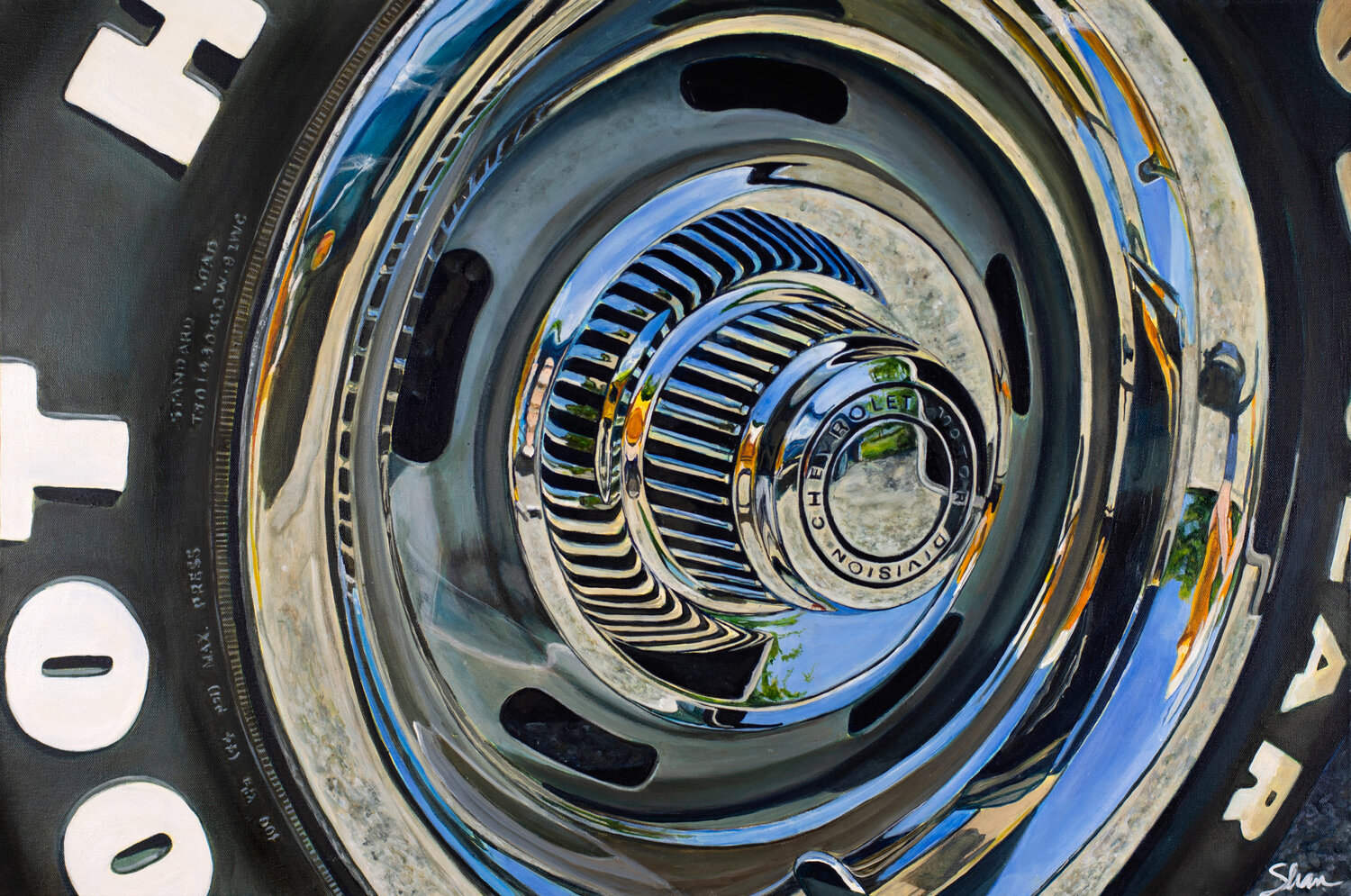Exhibit at Grand Bohemian Gallery to feature photorealist artist
Some artists have a very strong local presence. Others are recognized worldwide. But only a select few can boast that their work is on the Moon.
Shan Fannin is among them.
Five of Fannin’s paintings are included in The Lunar Codex, a collection of works by approximately 35,000 artists, writers, musicians and filmmakers from 231 countries, territories and indigenous nations that will be stored in time capsules on the lunar surface.
The method of storage is an analog technology branded as NanoFiche. The images should last hundreds of thousands of years, possibly to be found and enjoyed by future space travelers.
Fannin’s pieces will be included in all of the lunar “galleries,” including Codex Nova, launched Thursday, Feb. 15, aboard a SpaceX Falcon 9 and scheduled to land this week. But that will be one “opening” she won’t be able to attend.
“I’m never going to see it, but it’s kind of neat!” she said.
Currently, her work is in 10 Earthly galleries, including five paintings in The Kessler Collection. In fact, there is one opening she most definitely will be able to attend, on March 1 at entrepreneur Richard C. Kessler’s Grand Bohemian Gallery in St. Augustine. Fannin will be at the gallery to meet the public there during the monthly First Friday Art Walk.
Fannin is one of nine “Next Originals” selected by Kessler from a pool of 1,800 applicants to display her work in New York City’s Times Square and at several Grand Bohemian Galleries.
Such success often arrives only after many decades of honing one’s work. But Fannin’s path was very different. Though she demonstrated talent early in life and even did some painting many years ago, it wasn’t until her son was grown and off to college that she turned her attention to painting as a profession.
Not a photo
Fannin, who lives in Austin, Texas, is a photorealist painter specializing in depictions of all types of vehicles: cars, trucks, motorcycles, airplanes and boats. Her skill is such that the result, unless studied closely, may be mistaken for a photograph.
But Fannin isn’t attempting to precisely replicate what the camera records. Each painting represents her own personal take on the subject and varies from the original in subtle ways. In fact, despite the seeming precision of her work, she doesn’t rely solely on fine brushes to create it.
“I paint with my fingers, my palms and brushes,” she said. “I don’t just paint with brushes. I get really messy.”
And she doesn’t want that motorcycle to look exactly like her reference material.
“I want to have a little twist on it,” she said. “I will skew the color a little bit. I’ll add reflections. I’ll take something away.”
She considers her work about 90% realistic and 10% abstract, a style she came to appreciate after taking an art class as a mature adult.
“I really enjoy abstract art,” she said. “Before I got into this, I actually did not go to the abstract areas of museums. I know people who just rave about Picasso, but that wasn’t my thing.”
She came to appreciate the abstract qualities inherent in the human form while taking a drawing class, something which translated into her depiction of mechanical vehicles.
“When I got into cars, I saw the correlation with painting a beautiful woman … when you’re painting a Ferrari, that’s a beautiful woman,” she said.
She exclusively uses acrylic paint, having discovered early on that the fumes from oils gave her migraines, and works from photos that either she or her husband has taken while visiting a car show, air show or similar event.
For the “messy” portions, she coats her hands with a product called Liquid Glove to keep the paint from working into the skin.
“There are a lot of artists that paint with gloves, but I’m very tactile,” she said. “I want to feel the paint.”
Asked how she achieves the realistic effects, she laughed and attributed it in part to “a lot of caffeine and cursing.”
A career discovered
Fannin launched her career as a professional artist in 2015, just months after completing her first painting of a vehicle, an orange GMC truck. Today, that painting, which she says she hates, hangs in her dining room to “remind you where you started,” as her husband told her.
But the roots of Fannin’s art go back to the fifth grade, when she was doing an insect study for a science fair.
“I drew a grasshopper,” she said. “My teacher said, ‘Wow, you have talent for art.’”
But Fannin wasn’t convinced.
“I thought: Whatever,” she admitted with a laugh.
She took an art class in high school, and that teacher also told her she had talent.
“I thought: He’s just saying that,” she said.
But the teacher submitted her work to a community college, and she received a $1,000 scholarship.
“It was a big deal, because someone actually believed in me,” she said.
And though she went on to paint some murals and teach art to homeschooled children, life took her in other directions. She married her high school sweetheart, homeschooled their son and worked as a marketing director at a large corporation.
She didn’t pursue art professionally until she was in her mid-40s.
“I really believe we all have a talent, and a lot of us don’t find that talent until later in life,” she said. “I try to encourage others: If there’s something you really want to do, do it. Stop putting it off. My mom passed away at 52 years old, and she was always saying, ‘One day, one day, one day.’ Do it now.”
Life at the canvas
It takes Fannin about two to three weeks to complete a painting, and she does between 25 and 30 a year, often working on several at the same time. She has seven new paintings ready for the Grand Bohemian show in St. Augustine, and 11 more in progress.
In painting vehicles, she is careful to paint what she sees, even if that isn’t what people expect.
“I don’t use black in my painting at all,” she said. “I’ll use either darker gray or I’ll mix blue and brown together to make a dark color. And I don’t put bright white on the painting until the very, very end. … Like when I’m painting a tire, people are like, ‘Well, tires are black.’ No, they’re really like brown and green and purple. In the dark areas, I use what they call Payne’s gray, or I’ll use a blue, an ultramarine blue, and a brown.”
Fannin said she feels like a visual historian, recording these vehicles as they are today. And she does not feel threatened by the rise of artificial intelligence.
“I feel that people will always want a human to create something beautiful,” she said. “Whether it’s an article, a book, a photograph, a painting, whatever. If I lose my job one day because of AI, so be it. But I’m going to keep doing what I do.”
And she has no plans to ever retire.
“If you find a thing that makes you happy, it doesn’t matter if you’re working or whatever, you need to do that for the rest of your life. That’s what I’m hoping to do. So, if I’m 99 years old, I’ll still be painting motorcycles and cars and stuff.”
The Grand Bohemian Gallery is located at 49 King St. First Friday Art Walk runs from 5 to 9 p.m.
To learn more about Shan Fannin, go to shanfannin.com. To learn more about The Lunar Codex, go to lunarcodex.com.


